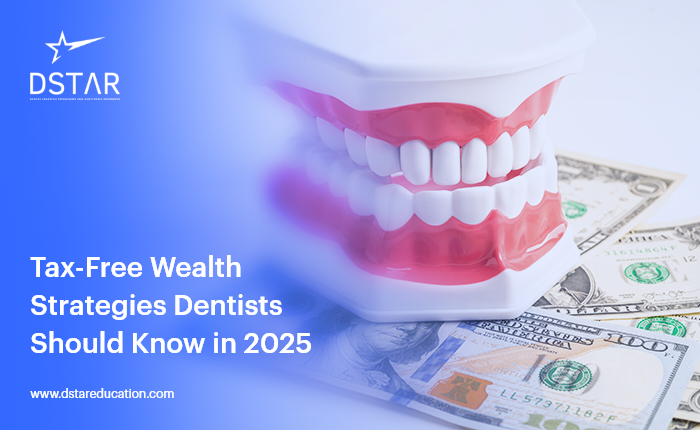In modern dentistry, patient comfort and procedural efficiency rely heavily on safe sedation practices. Among these, conscious sedation stands as a cornerstone technique that allows patients to remain relaxed yet responsive throughout dental or minor surgical procedures. Understanding conscious sedation, how it differs from other sedation levels, and what protocols govern its use ensures both patient safety and regulatory compliance.
What Is Conscious Sedation? The Clinical Definition
Conscious sedation, also known as conscious moderate sedation, is a pharmacologically induced state that depresses the central nervous system to a controlled degree. It allows the patient to tolerate unpleasant procedures while maintaining independent airway control, protective reflexes, and the ability to respond to verbal commands.
According to the American Dental Association (ADA) and the American Society of Anesthesiologists (ASA), conscious sedation applies when the patient’s cognitive function and coordination may be mildly impaired, but consciousness is maintained. This differs distinctly from deep sedation or general anesthesia, where airway support and ventilatory function often require assistance.
In dental and minor outpatient settings, intravenous conscious sedation and oral or inhalation routes are commonly employed. Each route utilizes different conscious sedation medications with precise dosing protocols to achieve predictable outcomes.
How Conscious Sedation Works: Physiological Mechanisms
During conscious sedation, medications act on gamma-aminobutyric acid (GABA) receptors in the brain, promoting relaxation and anxiolysis without eliminating awareness. The goal is to minimize stress responses, reduce perception of pain, and allow cooperative behavior without inducing full unconsciousness.
Oral sedatives such as oral midazolam produce lighter, slower-onset sedation. Nitrous oxide, however, has a rapid onset (3–5 minutes) and permits easy titration, which makes it useful for shorter procedures or patients who only require minimal-to-moderate relaxation.
Clinicians must understand the pharmacodynamics of conscious sedation drugs, as their effects are influenced by patient age, weight, comorbidities, and concurrent medications. Proper pre-procedure assessment ensures tailored sedation levels that meet the clinical objective while avoiding oversedation.
Common Conscious Sedation Drugs and Their Applications
The most frequently used conscious sedation medications include:
- Midazolam: A short-acting benzodiazepine that provides anxiolysis, amnesia, and mild muscle relaxation.
- Fentanyl: An opioid analgesic, often combined with benzodiazepines for synergistic comfort and pain relief.
- Propofol (in limited cases): Provides rapid sedation and recovery but requires advanced airway training and monitoring credentials.
- Nitrous Oxide (N₂O): Used widely in dental sedation. It provides anxiolysis and mild analgesia with a rapid onset (3–5 minutes) and rapid recovery, and it allows continuous titration to maintain the desired level of relaxation.
- Ketamine: Occasionally used in pediatric settings for its dissociative and analgesic effects while maintaining airway reflexes.
Each of these conscious sedation meds has distinct onset times, durations, and recovery profiles. Dentists and physicians must remain within the scope of their sedation permit level as defined by the Texas State Board of Dental Examiners (TSBDE) or equivalent regulatory bodies.
IV Conscious Sedation and Intravenous Administration Protocols
Intravenous conscious sedation delivers sedative agents directly into the bloodstream, allowing real-time titration to the desired effect. Its predictability makes it especially valuable for complex or lengthy dental procedures, implant surgeries, and cases involving anxious or medically compromised patients.
Key procedural steps include:
- Establishing intravenous access with aseptic technique.
- Continuous patient monitoring of SpO₂, heart rate, ECG, and blood pressure.
- Administering incremental doses until the desired conscious sedation effects are achieved.
- Maintaining verbal communication with the patient throughout.
- Preparing reversal agents (e.g., flumazenil for benzodiazepines) for immediate use if needed.
This technique demands advanced knowledge of airway anatomy, drug pharmacokinetics, and emergency management. Conscious sedation definition within TSBDE guidelines categorizes this practice as moderate sedation and mandates ACLS/PALS certification and emergency equipment readiness.
Conscious Sedation Experience: What Patients Can Expect
The conscious sedation experience is characterized by relaxation, reduced anxiety, and partial amnesia of the procedure. Patients typically remain awake enough to follow instructions, open their mouths, or move slightly on request. They may perceive time passing more quickly and have limited memory of the treatment afterward.
Before sedation, patients should receive thorough counseling about the process, expected sensations, and postoperative care. Common feelings include lightheadedness, warmth, and mild drowsiness. Recovery is generally rapid, but full alertness depends on the specific sedative agent and dosage administered.
To ensure safe sedation delivery, dental teams must complete a structured pre-sedation evaluation. This should include verification of NPO status (to prevent aspiration if the level of sedation deepens), medical and surgical history review, airway risk assessment, ASA classification determination, and documentation of all current medications, allergies, and prior anesthesia history.
Patient Monitoring During Conscious Sedation
Monitoring is the foundation of patient safety during conscious sedation. Whether performed through oral, inhalation, or IV conscious sedation, practitioners must ensure that the patient’s vital signs remain within safe physiological limits throughout the procedure.
Essential components of a patient monitoring system for conscious moderate sedation include:
- Continuous pulse oximetry to track oxygen saturation (SpO₂).
- Noninvasive blood pressure monitoring at regular intervals.
- Electrocardiographic (ECG) observation in medically complex patients.
- End-tidal CO₂ monitoring (capnography) when deep sedation levels risk approaching anesthesia.
- Visual observation for changes in breathing, skin color, and responsiveness.
Monitoring allows clinicians to identify signs of sedation depth and detect early indicators of over sedation, such as diminished responsiveness, airway obstruction, or declining oxygen saturation. Maintaining a trained auxiliary staff member solely responsible for monitoring is an important element of safe practice under TSBDE and ADA guidelines.
Recovery and Discharge Criteria
Recovery after conscious sedation requires careful observation until the patient returns to baseline consciousness and stable vital signs. The recovery area must be equipped with oxygen, suction, monitoring devices, and emergency resuscitation equipment.
Discharge criteria include:
- Full orientation and ability to maintain a patent airway independently.
- Stable blood pressure and oxygen saturation for at least 30 minutes.
- Minimal nausea or dizziness.
- Ability to ambulate with minimal assistance, when applicable.
- Confirmation of an escort for transportation home.
Patients should receive written postoperative instructions, including restrictions on driving, operating machinery, or signing legal documents for 24 hours. The clinician must document recovery times, medications administered, and any adverse events to meet state recordkeeping standards.
Safety Protocols and Emergency Preparedness
Every provider offering conscious sedation must be prepared for emergencies. While adverse events are rare, complications can include airway obstruction, hypoventilation, allergic reactions, or vasovagal responses.
Preparedness measures include:
- Maintaining Basic and Advanced Life Support (BLS/ACLS) certification.
- Keeping a complete emergency kit with airway adjuncts, oxygen, and reversal agents.
- Conducting regular mock drills for medical emergencies.
- Reviewing and updating protocols annually as part of CE requirements.
For intravenous conscious sedation, special attention must be given to airway management skills, since drug titration errors can quickly progress toward deeper sedation levels. Understanding the narrow margin between conscious sedation vs moderate sedation and moderate sedation vs deep sedation is an important skill for avoiding respiratory compromise.
Documentation and Regulatory Compliance
Under the Texas State Board of Dental Examiners (TSBDE) regulations, all Dental Sedation providers must maintain accurate documentation of every sedation procedure.
This includes:
- Drug names, dosages, and administration times.
- Route of administration and patient response.
- Continuous vital sign logs at specified intervals.
- Recovery duration and discharge notes.
- Any complications and their management.
Such documentation not only fulfills legal and ethical duties but also serves as important evidence in the event of audits or malpractice claims. At DSTAR Education, sedation permits and CE courses emphasize correct documentation, risk reduction, and adherence to regulatory frameworks.
Continuing Education and Competency Maintenance
For Texas practitioners, ongoing education ensures mastery of conscious sedation drugs, airway techniques, and safety protocols. DSTAR Education provides state-approved conscious sedation permit renewal courses that meet all TSBDE continuing education standards.
Each course reinforces procedural safety, pharmacology, and patient management principles, aligning with modern best practices for conscious sedation experience and patient outcomes.
Conclusion
Conscious sedation bridges the gap between patient comfort and procedural control, offering a scientifically sound and legally regulated approach to dental and outpatient care. Whether performed via oral, inhalation, or IV conscious sedation, its success depends on precise drug titration, vigilant monitoring, and a well-trained clinical team.
By understanding conscious sedation, mastering conscious sedation medications, and maintaining updated training through approved continuing education, dental professionals ensure both patient safety and compliance.
DSTAR Education remains a trusted partner in promoting excellence in sedation practices, providing state-approved training for sedation permit renewal, airway management, and clinical safety.
FAQs
Q1. What is conscious sedation?
Conscious sedation is a controlled state of reduced awareness achieved with sedative drugs that allow patients to remain responsive and maintain airway control during dental or minor surgical procedures.
Q2. What drugs are used for conscious sedation?
Common conscious sedation drugs include midazolam, fentanyl, nitrous oxide, ketamine, and, in some cases, propofol under advanced supervision.
Q3. What is IV conscious sedation?
IV conscious sedation, or intravenous conscious sedation, delivers sedatives directly into the bloodstream for rapid onset and precise control of sedation depth.
Q4. What are the main benefits of conscious sedation in dentistry?
It reduces anxiety, improves cooperation, minimizes pain perception, and enhances procedural efficiency while maintaining patient safety.
Q5. What does the conscious sedation experience feel like?
Patients feel calm and drowsy but remain aware enough to respond to instructions. Time seems to pass quickly, and most have little memory of the procedure afterward.
Q6. What are the safety measures during conscious sedation?
Continuous monitoring, emergency preparedness, airway management readiness, and appropriately trained staff are mandatory.
References
- American Dental Association. Guidelines for the Use of Sedation and General Anesthesia by Dentists. ADA Publications.
- American Society of Anesthesiologists. Practice Guidelines for Moderate Procedural Sedation and Analgesia. Anesthesiology, 136(1), 1–16.
- Texas State Board of Dental Examiners. Sedation and Anesthesia Rules, Title 22, Part 5, Chapter 110.
- Malamed, S. F. Sedation: A Guide to Patient Management (6th ed.). Elsevier.
- Academy of General Dentistry (AGD PACE). Continuing Education Standards and Approval Program.
- American Heart Association. Advanced Cardiovascular Life Support Provider Manual.
 Take Free TSBDE Anesthesia Jurisprudence Practice Exam Now!
Take Free TSBDE Anesthesia Jurisprudence Practice Exam Now!












